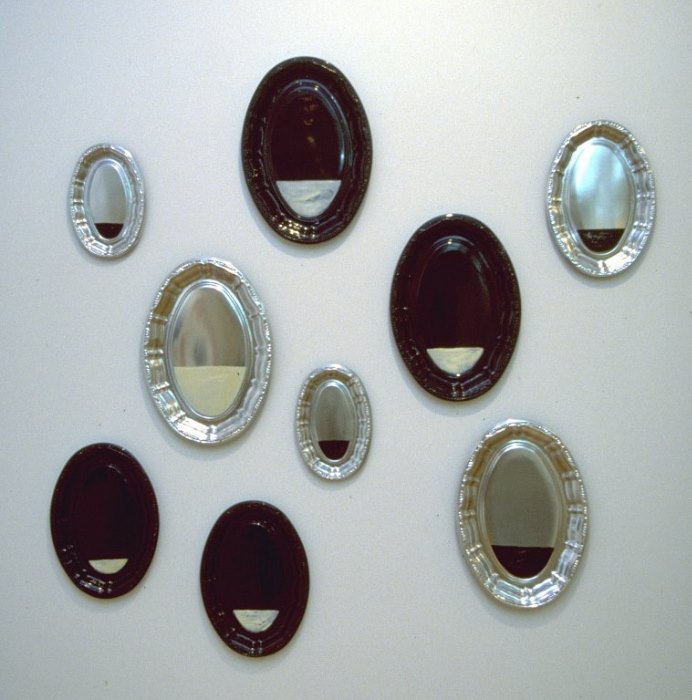Home and Away: Contemporary Australian and New Zealand Art for the Chartwell Collection (Auckland: Auckland Art Gallery with David Bateman, 1999).
Patrick Pound is irresistibly drawn to the quaint. He is attracted to cultural products that the passage of time has liberated from moral or aesthetic pertinence—things piquant by virtue of being old-fashioned in appearance, ornamentation, and manner. Scouring secondhand bookshops, he locates raw material that is already obscure, outmoded, out of print: for instance, cancelled library books, discarded family photographs, used postcards. Not only does Pound work with quaint materials, his work emphasises quaintness. Take his recent collage of old book pages, A Guide: Towards a Theory of Everything (1998). Though the scale and title promise something major, this work is an accumulation of trivia, ironic juxtapositions, and arcane conceits. You have to go up close to discern the subtle liberties the artist has taken in arranging, grafting, and working the given. Pound thus declares his complex relation to the big picture, whether it comes in the form of a theory of everything, an encyclopedia, a library, or museum, or some other brand of empire—all of which are implicated in the raw materials chosen for A Guide.
In Landscape of Mirrors (1991), Pound treats the work of Colin McCahon, New Zealand’s acclaimed big-picture artist, painting McCahonesque minimalist landscapes across a number of disposable black and silver plastic serving platters. McCahon certainly had a major project. His late landscapes were the culmination of a search for national identity that had dominated not only his own work but also post-war New Zealand art and letters. McCahon practised an ‘expressive realism’ by which it was thought the self would be perfected in its search for the essence of the land, while the truth of the place could be simultaneously distilled via deep introspection.
Pound revisits McCahon’s heroic project, reworking it as something quaint. The platters he paints on are the cheap, ‘fancy’ kind some people use to serve dainty finger food. Pound creates a cheesy—a wine-and-cheesy—version of McCahon. Satirising the idea of the land as a mirror to the self, the platters are arranged as a gathering of portrait mirrors in which we might celebrate our good persons. As frames, the platters seem extravagant and prissy in the face of McCahon’s preference for the robust, unframed, and plain-spoken. Pointedly inappropriate, the supports are unsupportive: they pull McCahon’s punches. And so, Pound creates a McCahon for the powder room, conflating McCahon’s metaphysical presumption, his virile hankering for reconciliation with the land, with vanity and preening.
Pound’s project epitomises a camp sensibility: he is not revolutionary; he offers no alternative big picture; his work is necessarily parodic in that he is reliant on conventions to inflect, presumptions to deflect. As Susan Sontag explains: ‘The whole point of Camp is to dethrone the serious. Camp is playful, anti-serious. More precisely, Camp involves a new, more complex relation to “the serious”. One can be serious about the frivolous, frivolous about the serious.’1
.
[IMAGE: Patrick Pound Landscape of Mirrors 1991]
- ‘Notes on Camp’, A Susan Sontag Reader (Harmondsworth: Penguin, 1982), 115.
